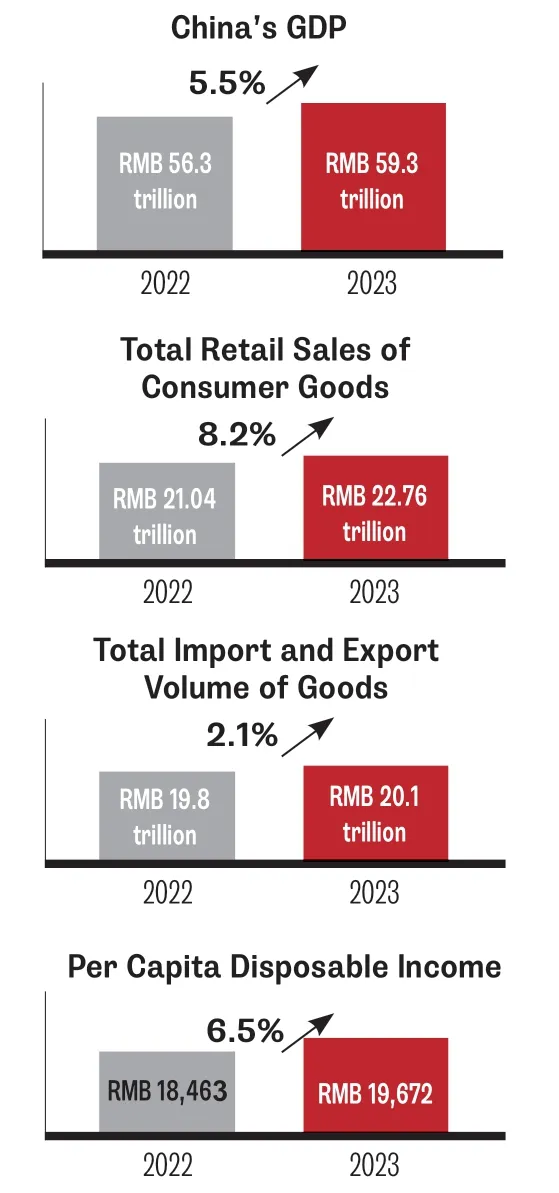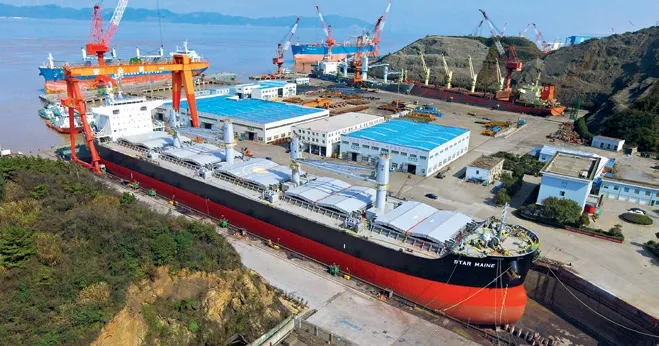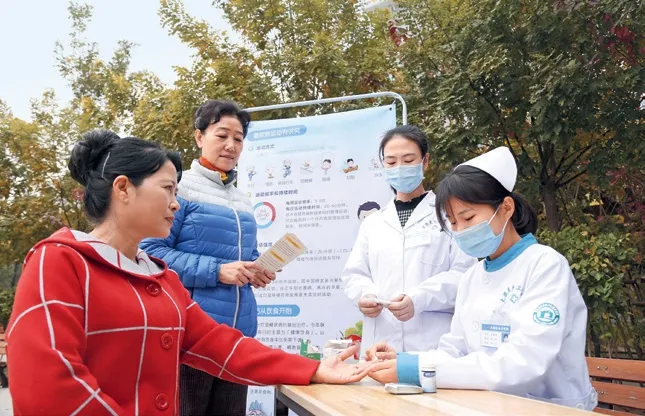ECONOMY/SOCIETY
China’s H1 Economic Data
According to data from the National Bureau of Statistics,China’s overall economy recovered during the first half (H1) of the year.
With the social and economic operation returning to normal,the country saw an upward trend of its major indicators,its new driving forces growing,development quality enhancing,and people’s lives improving,all of which laid a solid foundation for achieving the goals of economic and social development for the whole year.

Marine Industry Saw Strong Recovery in H1

China’s gross marine product grew six percent year-on-year to RMB 4.7 trillion (about US $658.1 billion) during the first six months of 2023,accelerating from 5.1-percent growth registered in the first quarter.
The digital and green transformation of the marine industry is accelerating,and with the decommissioning of old ships and the introduction of international mandatory emission reduction policies,demand for new ships soared during the period,buoying shipbuilding business performance.
Data show that new orders received by China’s shipbuilders for seagoing ships rose 38.1 percent year-on-year in the period,accounting for 67.2 percent on the internal market.
China’s marine tourism has also rebounded during this period,with marine passenger traffic jumping 130.5 percent year-onyear,helping it recover to the level of the same period in 2019.
China’s Computing Power Reached New High

The scale of the core computing power industry in China reached RMB 1.8 trillion (about US $0.26 trillion) over the past year,according to data released at a news conference of the 2023 China Computing Power Conference.
As of the end of 2022,the total scale of the country’s computing power reached 180 EFlops,with an annual growth of nearly 30 percent,ranking second globally,and the total scale of storage capacity exceeded a trillion gigabytes.
China will take steps to further promote the high-quality development of computing infrastructure,strengthen top-level design,and accelerate the application of key computing power technologies.
RMB 927.9 Billion
According to the State Taxation Administration,since the beginning of this year,with the implementation of various tax and fee preferential policies,there was a total increase of RMB 927.9 billion nationwide in tax reductions and deferred tax and fee payments during the first half of this year,facilitating the sustained recovery of the national economy.
Notable Profit Increases Among Internet Enterprises in H1

During the first half of 2023,the combined business revenues of China’s Internet companies above the designated size came in at RMB 643.3 billion,up 2.6 percent year-on-year.
Their cumulative profits rose 27.6 percent year-on-year to RMB 63.96 billion (about US $8.97 billion).
To be specific,the revenue of enterprises in the information service sector has slightly shrunk,while that of enterprises in the life service sector has increased.
It is worth mentioning that the revenue of enterprises in the online sales field is growing rapidly.During the first half of this year,enterprises that mainly offer online sales services saw their business revenues increase 37.4 percent over the same period of 2022.
Significant Progress in Cultural Heritage Protection

China has made significant strides in advancing the high-quality development of its cultural relics and heritage.Various initiatives have been launched to advance archaeological research,cultural relics and heritage preservation and utilization,and technological innovation,and cultivate a skilled talent pool,the National Cultural Heritage Administration mentioned at a recent press conference held in Beijing.
There are presently 18 major archaeological initiatives underway in China,and 268 independent projects have been successfully launched.The country has 55 national archaeological parks and 6,565 museums,and over 90 percent of the museums nationwide are accessible to the public for free.
With progress in strengthening the protection and utilization of revolutionary cultural relics,China now boasts over 36,000 immovable relics and a collection of over one million pieces (sets) of movable relics with a revolutionary legacy.Furthermore,the country has formulated guidelines to strengthen technological innovation in the field of cultural heritage and revised standard management methods for cultural heritage protection.China now boasts 40 key cultural heritage research bases at the national level.
Social Organizations Alive and Well
According to the Ministry of Civil Affairs,the number of community-level social organizations in China exceeded 1.75 million at the end of 2022.These organizations were established by local residents and entities in their communities to provide charitable services,organize mutual-aid,sports,and recreational activities,and arrange technological support for rural production.
In 2021,the civil affairs administrations launched the “Neighbors Looking out for Each Other” program,which enlisted the participation of more than 90,000 social organizations.They provide community services such as companionship care,psychological counseling,legal aid,and social integration for 93.36 million people in need.They are also playing an active part in addressing issues of general concern to local residents,such as living environment,public security,community management,elderly care,and childcare.Over the past three years,the Ministry of Civil Affairs has rolled out 86 training programs for community-level social organizations,covering 87,000 of their leaders and staff members.

6.6 Million Charging Piles
As of the end of June,the total number of all types of electric vehicle charging piles in China had exceeded 6.6 million,an increase of 69.8 percent year-on-year.This number includes 351,000 piles for public use and 1.09 million private ones that were installed during the first half of this year.The establishment of charging facilities has been speeding up in tandem with the strong expansion in new-energy vehicles over recent years.Charging piles are now available for use at 5,931 rest areas along expressways and 29,009 parking slots across China.
China Builds the World’s Largest Carbon Market

China has established the world’s largest carbon market for greenhouse gas emissions and significantly reduced its carbon emissions intensity,vice minister of Ecology and Environment Guo Fang said at a National Low-Carbon Day activity on July 12.China has made positive progress in addressing climate change through a series of measures that includes energy conservation,carbon reduction,emissions reduction,and the establishment and improvement of a carbon market,Guo said.
The cumulative volume of carbon emissions allowances on China’s carbon market was 237 million tonnes by June 30,with a turnover of more than RMB 10.91 billion.China’s new energy vehicle production and sales have remained first globally for eight consecutive years,its renewable energy has developed rapidly,and its wind power and photovoltaic installations rank first in the world.
Guo said the Ministry of Ecology and Environment will continue to implement a national strategy to respond actively to climate change,promote the construction of a national carbon market in a steady and orderly manner,and actively participate in global governance to address climate change.
The National Low-Carbon Day was first observed in 2012 to encourage society to participate in green and low-carbon initiatives.

